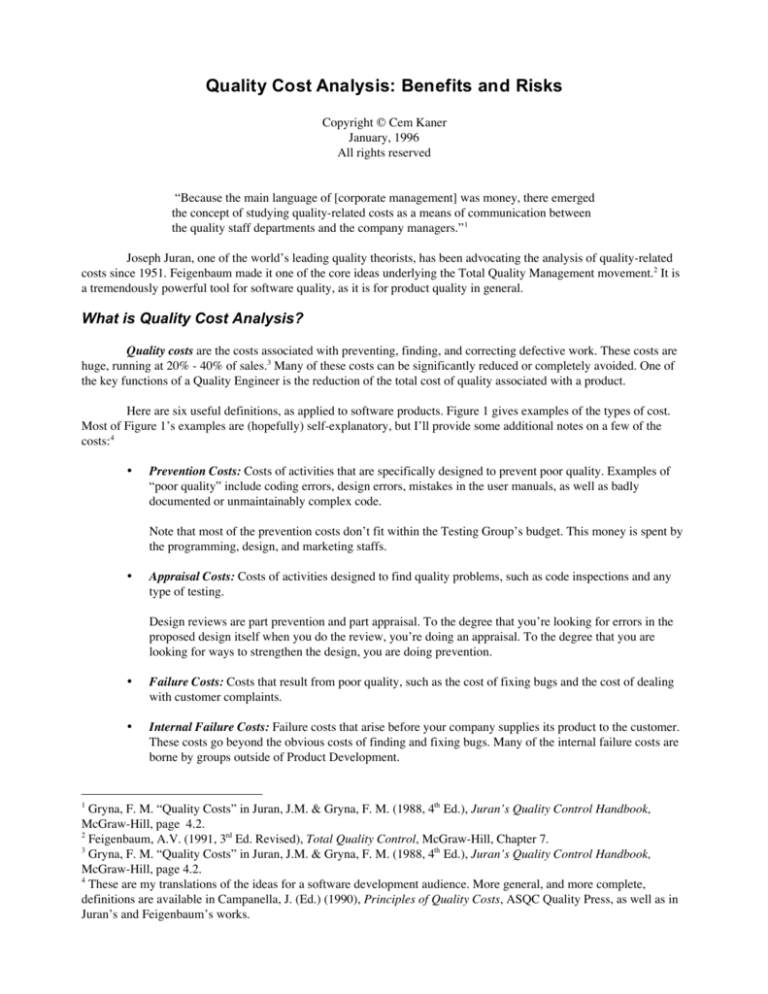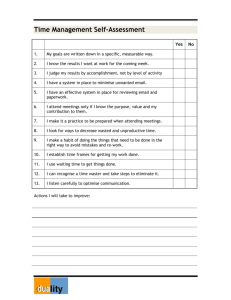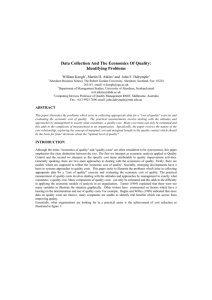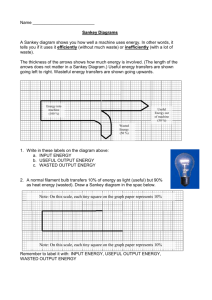
Quality Cost Analysis: Benefits and Risks
Copyright © Cem Kaner
January, 1996
All rights reserved
“Because the main language of [corporate management] was money, there emerged
the concept of studying quality-related costs as a means of communication between
the quality staff departments and the company managers.” 1
Joseph Juran, one of the world’s leading quality theorists, has been advocating the analysis of quality-related
costs since 1951. Feigenbaum made it one of the core ideas underlying the Total Quality Management movement.2 It is
a tremendously powerful tool for software quality, as it is for product quality in general.
What is Quality Cost Analysis?
Quality costs are the costs associated with preventing, finding, and correcting defective work. These costs are
huge, running at 20% - 40% of sales.3 Many of these costs can be significantly reduced or completely avoided. One of
the key functions of a Quality Engineer is the reduction of the total cost of quality associated with a product.
Here are six useful definitions, as applied to software products. Figure 1 gives examples of the types of cost.
Most of Figure 1’s examples are (hopefully) self-explanatory, but I’ll provide some additional notes on a few of the
costs:4
•
Prevention Costs: Costs of activities that are specifically designed to prevent poor quality. Examples of
“poor quality” include coding errors, design errors, mistakes in the user manuals, as well as badly
documented or unmaintainably complex code.
Note that most of the prevention costs don’t fit within the Testing Group’s budget. This money is spent by
the programming, design, and marketing staffs.
•
Appraisal Costs: Costs of activities designed to find quality problems, such as code inspections and any
type of testing.
Design reviews are part prevention and part appraisal. To the degree that you’re looking for errors in the
proposed design itself when you do the review, you’re doing an appraisal. To the degree that you are
looking for ways to strengthen the design, you are doing prevention.
1
•
Failure Costs: Costs that result from poor quality, such as the cost of fixing bugs and the cost of dealing
with customer complaints.
•
Internal Failure Costs: Failure costs that arise before your company supplies its product to the customer.
These costs go beyond the obvious costs of finding and fixing bugs. Many of the internal failure costs are
borne by groups outside of Product Development.
Gryna, F. M. “Quality Costs” in Juran, J.M. & Gryna, F. M. (1988, 4th Ed.), Juran’s Quality Control Handbook,
McGraw-Hill, page 4.2.
2
Feigenbaum, A.V. (1991, 3rd Ed. Revised), Total Quality Control, McGraw-Hill, Chapter 7.
3
Gryna, F. M. “Quality Costs” in Juran, J.M. & Gryna, F. M. (1988, 4th Ed.), Juran’s Quality Control Handbook,
McGraw-Hill, page 4.2.
4
These are my translations of the ideas for a software development audience. More general, and more complete,
definitions are available in Campanella, J. (Ed.) (1990), Principles of Quality Costs, ASQC Quality Press, as well as in
Juran’s and Feigenbaum’s works.
For example, if your company sells thousands of copies of the same program, you will probably print
several thousand copies of a multi-color box that contains and describes the program. You (your company)
will often be able to get a much better deal by booking press time with the printer in advance. However, if
you don’t get the artwork to the printer on time, you might have to pay for some or all of that wasted press
time anyway, and then you may to pay additional printing fees and rush charges to get the printing done
on the new schedule. This can be an added expense of many thousands of dollars.
Sometimes the programming group will treat user interface errors as low priority, leaving them until the
end to fix. This can be a big mistake. The marketing staff (or packaging production staff) need pictures of
the product’s screen long before the program is finished, in order to get the artwork for the box into the
printer on time. User interface bugs – the ones that will be fixed later – can make it hard for these staff
members to take (or mock up) accurate screen shots. Delays caused by these minor design flaws, or by
bugs that block a packaging staff member from creating or printing special reports, can cause the company
to miss its printer deadline.
•
External Failure Costs: Failure costs that arise after your company supplies the product to the customer,
such as customer service costs, or the cost of patching a released product and distributing the patch.
•
Total Cost of Quality: The sum of all the costs (Prevention + Appraisal + Internal Failure + External
Failure).
Figure 1. Examples of Quality Costs Associated with Software Products.
Prevention
•
•
•
•
•
•
•
•
•
Staff training
Requirements analysis
Early prototyping
Fault-tolerant design
Defensive programming
Usability analysis
Clear specification
Accurate internal documentation
Evaluation of the reliability of development
tools (before buying them) or of other
potential components of the product
Appraisal
•
•
•
•
•
•
•
•
•
Internal Failure
•
•
•
•
•
•
•
•
•
Bug fixes
Regression testing
Wasted in-house user time
Wasted tester time
Wasted writer time
Wasted marketer time
Wasted advertisements
Direct cost of late shipment
Opportunity cost of late shipment
Design review
Code inspection
Glass box testing
Black box testing
Training testers
Beta testing
Test automation
Usability testing
Pre-release out-of-box testing by customer
service staff
External Failure
•
•
•
•
•
•
•
Technical support calls
Preparation of support answer books
Refunds and replacement with updated
product
Lost sales
PR work to soften drafts of harsh reviews
Lost customer goodwill
Warranty costs and other costs imposed by
law
In his book, Out of the Crisis, W.E. Deming listed Excessive costs of liability, swelled by lawyers that work on
contingency fees as one of the seven Deadly Diseases. I’m a CQE who recently became a lawyer. My objective is to use
the legal system as a vehicle to improve software quality, either as a corporate counsel who works with Engineering in a
proactive manner, or as a plaintiff’s attorney who files expensive bug reports on a contingent fee basis. In my view,
litigation over defective products puts pressure on companies who don’t care about their customers. It empowers
quality engineers. It is part of the cure, not one of the diseases.
Software quality is often abysmally low. It is impossible to fully test a software product, so all software is necessarily
shipped with defects. (For a discussion of the problems of testing, and of the types of defects in software, see my book,
Testing Computer Software, 2nd Ed., with Jack Falk & Hung Quoc Nguyen, Van Nostrand Reinhold, 1993.) Many
companies ship software with significant, known defects. Others don’t test the products well enough to discover the
most serious problems.
As Quality Engineers, we study quality-related decision making from a financial viewpoint. Our objective is to
minimize the cost of quality associated with each product. (See Principles of Quality Costs, 2nd Ed., Edited by Jack
Campanella, ASQC Quality Press, 1990). Figure 1 provides some representative quality costs associated with the
development of software products that will be sold to the public.
Figure 1. Examples of Quality Costs Associated with Software Products.
Prevention
•
•
•
•
•
•
•
•
Staff training
Requirements analysis
Early prototyping
Fault-tolerant design
Defensive programming
Usability analysis
Clear specification
Accurate documentation
Appraisal
•
•
•
•
•
•
•
•
Internal Failure
•
•
•
•
•
•
•
•
•
Bug fixes
Regression testing
Wasted in-house user time
Wasted tester time
Wasted writer time
Wasted marketer time
Wasted advertisements
Direct cost of late shipment
Opportunity cost of late shipment
Design review
Code inspection
Glass box testing
Black box testing
Training testers
Beta testing
Test automation
Usability testing
External Failure
•
•
•
•
•
•
Technical support calls
Preparation of support answer books
Refunds and replacement with updated
product
Lost sales
PR work to soften drafts of harsh reviews
Lost customer goodwill
Unfortunately, the ASQC’s Quality Costs Committee omitted an important class of quality-related costs when they
published Principles of Quality Costs. Look at Appendix B, the Detailed Description of Quality Cost Elements, and
you’ll see that all of the costs listed are costs borne by the manufacturer / seller of the product.
The manufacturer and seller are definitely not the only people who suffer quality-related costs. The customer suffers
quality-related costs too. If a manufacturer sells a bad product, the customer faces significant expenses in dealing with
that bad product.
Figure 2 lists some of the external failure costs that are borne by customers, rather than by the company.
Figure 2. Examples of External Failure Costs Borne by the Buyer and the Seller
Seller: external failure costs
These are the types of costs absorbed by the
seller that releases a defective product.
•
•
•
•
•
•
Technical support calls
Preparation of support answer books
Refunds
Replacement with updated product
PR work to soften drafts of harsh reviews
Lost customer goodwill
•
Costs imposed by law
Customer: failure costs
These are the types of costs absorbed by the
customer who buys a defective product.
•
•
•
•
•
•
•
•
•
•
•
Wasted time
Lost data
Lost business
Embarrassment
Frustrated employees quit
Failure of demos to customers and other
tasks that could only be done once
Cost of replacing product
Cost of reconfiguring the system
Cost of recovery software
Cost of tech support
Injury / death
Many of the external failure costs, such as goodwill, are difficult to quantify, and many companies therefore ignore
them when calculating their cost-benefit tradeoffs. Other external failure costs can be reduced (e.g. by providing
cheaper, lower-quality, post-sale support, or by charging customers for support) without increasing customer
satisfaction. By ignoring the costs to our customers of bad products, quality engineers encourage quality-related
decision-making that victimizes our customers, rather than delighting them.
The point of quality-related litigation is to transfer some of the costs borne by a cheated or injured customer back to the
maker or seller of the defective product. The effect of this is to put pressure on the manufacturer to develop higher
quality, safer products.
It is fashionable for companies to whine about their customers’ ability to sue over defective products. It’s not surprising
to hear this -- we’ve all known executives who care more about this quarter’s profits than about their longer term
relationships with customers. And we’ve all heard them whine about those dratted nitpickers in QA. But it amazes me
when I hear anger toward plaintiffs’ lawyers at ASQC meetings -- fundamentally, we are on the same side.







